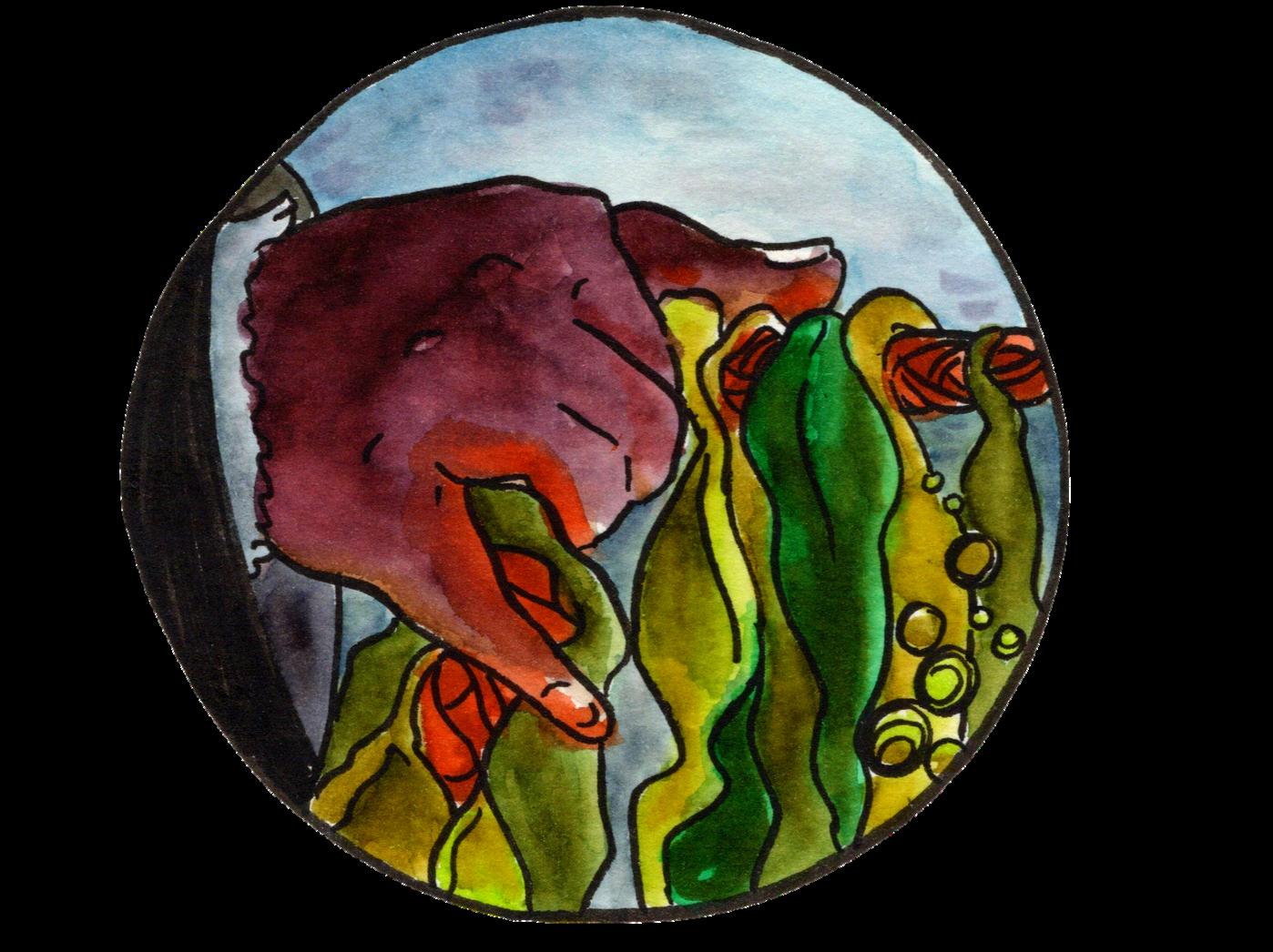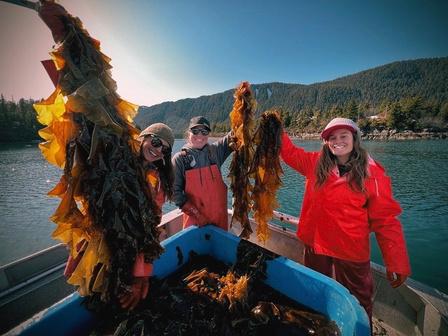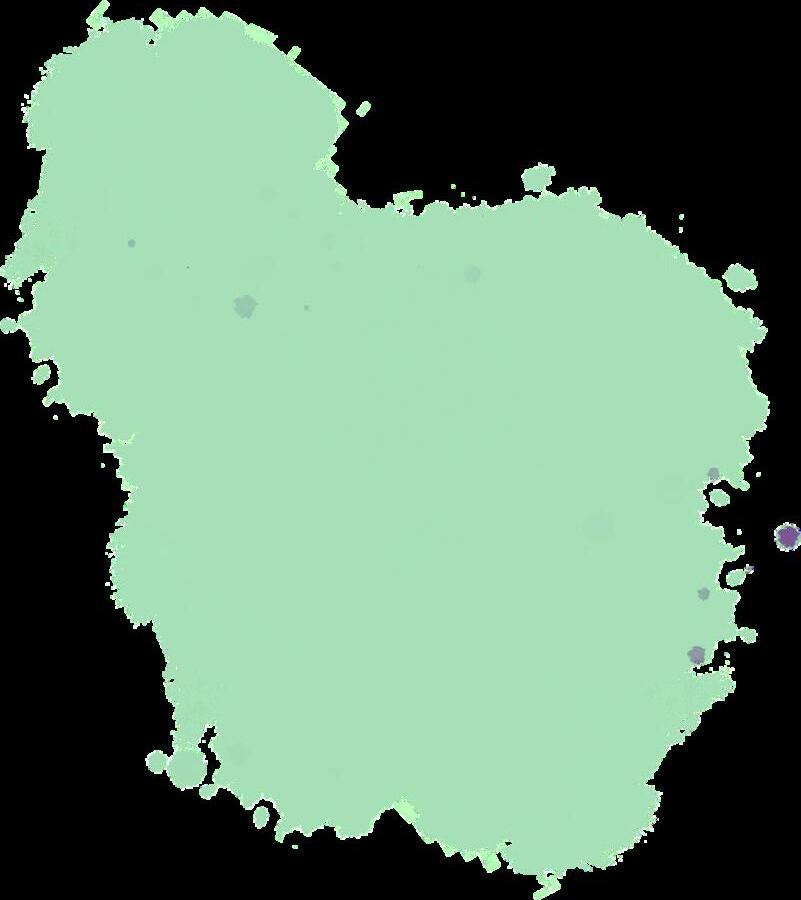
3 minute read
Food From The Sea
REGENERATIVE PRACTICES OF TENDING AND CULTIVATING MARINE ORGANISMS FOR FOOD ENHANCE SURROUNDING ECOSYSTEMS AND FEED ALASKAN FAMILIES.
We need to jumpstart a region-wide, and eventually state-wide, Alaska Restorative Kelp Initiative that brings Native tribal members, women, youth and fishermen together to help restore the ocean and to learn how to grow traditional sea vegetables and to help us get this new ocean industry off the ground. Besides, we don't have to build high-speed boats that burn enormous amounts of fossil fuels chasing kelp around, and we don’t have to feed it, water it, or fertilize it–just care for it.
Advertisement
Dune Lankard, Eyak Elder of the Native Conservancy, First to permit and grow kelp in Prince William Sound
KELP FARMING
A particularly exciting area of economic opportunity is the emerging kelp farming industry, which is one branch of regenerative mariculture that involves growing sea greens on lines suspended below the ocean’s surface. With only eight active commercial seaweed farms currently operating in-state, kelp mariculture is nascent in Alaska, and emerging ocean farmers have the power to shape it to be ethical, reciprocal, and responsible. Immigrant communities have made huge contributions to this industry and are a large part of the workforce.
Kelp is a nutrient-dense food that carries cultural significance for many Indigenous communities. It benefits the marine environment, strengthens the economic resilience of rural Alaska, and directly increases food security for coastal communities and areas where fertile land is scarce. In kelp, we find a sea green that requires no fertilizers and no chemicals to grow–only naturally-occurring nutrients, ocean water, and sunlight. In turn, it nourishes our bodies with high levels of vitamins, minerals, antioxidants, fiber, Omega-3s, and has 10 times more calcium than milk. Kelp strengthens the immune system, improves thyroid functioning, lowers blood pressure and purifies the arteries.
The primary sea vegetables grown in Alaska today are sugar kelp (Saccharina latissima), ribbon kelp (Alariamarginata) and bull kelp (Nereocystis luetkeana).
Aside from its easy harvestability, kelp heals the ocean. In the words of Dune and the Native Conservancy, “kelp can help” as Alaska faces rapidly acidifying oceans, warming waters, and rising sea levels. It sequesters carbon and chemically transforms the surrounding waters, reducing acidification and creating oxygen-rich pockets. There is a “halo effect” of enhanced water quality in areas directly surrounding farms.
Kelp simultaneously provides vital habitat and food for many species of marine mammals, fish, crustaceans, and sea birds. It creates more nurseries and refugia for juvenile fish, including salmon and Pacific herring, and supports smolts' safety in their journeys from natal rivers to open ocean.
of pacific oysters and other species is a nonextractive way to grow food in the ocean and sustain local economies. Alaska’s cold waters allow growers to produce high-quality oysters year round and provide a buffer from the ocean acidification that has hurt oyster farms in the Pacific Northwest. On the other hand, shellfish farmers face challenges including high transportation costs, and few existing farms provide enough income to support a family. Cooperative and community-owned enterprises, such as the Kachemak Bay Shellfish Co-op may provide a path forward. The co-op centralizes transportation costs so that family farmers can sell their oysters and ship directly through the same operational community system.

SHELLFISH FARMING

While Alaska’s seaweed industry is still modest in size, mariculture is gaining momentum. In the Kodiak Archipelago, there is a growing network of Alaska Native owned kelp farms called Alutiiq Grown. The Alaska Seaweed Market Assessment explains, “A host of new potential growers are in or recently emerged from permitting processes, and the potential for seaweed production is immense in the state.” This is backed by high interest in seaweed’s role in solutions to major global challenges such as carbon sequestration, alternative proteins, and transitions away from fossil fuels in packaging and energy. However, those types of seaweed production could require growers to scale up to industrial proportions. The operational costs of kelp farming in-state are also high, meaning there is work to be done to make the industry more accessible.
Now is a critical moment for coastal communities to create their own unique visions of how they want mariculture to look in their home waters. While some forces are pushing for this industry to become very large, very quickly, perhaps the most positive impacts will come from thoughtfully-planned, small-scale family farms.











